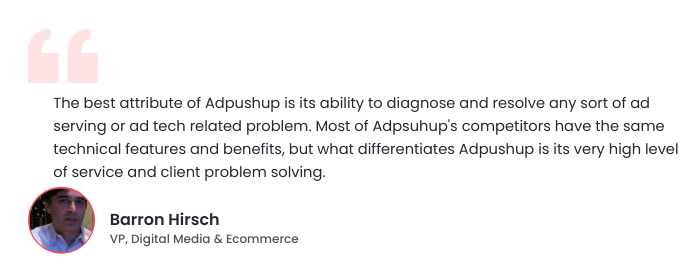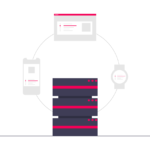Discover how Google Analytics 4 (GA4) can impact your website’s RPM (Revenue per Mille) and learn about the potential changes it may bring to your online revenue tracking and optimization strategies.
The long-due switch from Universal Analytics to Google Analytics 4 on July 1, 2023, has thrown the publishing sector into disarray.
Its effects are not limited to the standard metrics used in daily reports.
Many publishers are struggling with updating and re-establishing their tools as they adjust to new meanings of familiar terminology and try to measure success year over year.
The professionals at AdPushup are here to help you during this time of transition as we will be discussing issues such as your earnings, the often-overlooked topic of RPM, and how Google Analytics 4 affects or doesn’t `affect these aspects.
What is RPM, and What Does it Mean for Publishers?
Some of you might already know these details, but some upcoming questions are still quite common, even for experienced publishers. Let’s simplify and clarify things:
- A higher RPM doesn’t necessarily mean you’ve earned more money.
- Conversely, a lower RPM doesn’t always imply reduced earnings.
- When RPM appears as $0 or remains flat on the graph, it doesn’t necessarily mean your earnings have stagnated.
We realize this may seem puzzling. While it would seem sensible that a higher RPM or more visitors would result in more money, this is only sometimes the case. The main thing to remember is, however:
For RPM to have value, its income and traffic estimates must be correct.
Google has modified the Sessions calculation for GA4:
GA4 Sessions
When a user launches your app to the forefront or loads a new page or screen after their previous session has ended, it is considered the start of a new session.
Universal Analytics Sessions
Every time a new visitor arrives at your website. Only after 30 minutes of inactivity or after coming from a different source or referrer will a new session be generated for that person.
Due to subtle differences in Traffic, RPM also changes between UA and GA4.
If GA4 records fewer sessions for some publishers, RPM will be higher because revenue is divided by a smaller number of sessions.
Conversely, if GA4 reports more sessions than Universal Analytics, RPM will be lower because revenue is divided by a higher number of sessions.

How to Calculate RPM?
RPM, or Revenue Per Mille, is a crucial metric in digital advertising and online publishing. It quantifies how much revenue is generated for every thousand impressions on a website or digital platform. To calculate RPM, you can use the simple formula:
RPM = (Total Revenue / Total Impressions) * 1000
Will Google Analytics 4 Affect RPM? If Yes, Then in What Way?
Google Analytics 4 (GA4) may have an effect on RPM, albeit perhaps not in the manner you’d expect. Revenue per mile (RPM) is a metric used to assess the value of a website by dividing its yearly income by the number of unique visitors.
GA4’s session counts vary from Universal Analytics. Users who stay on your site for 30 seconds or longer or who see several pages are considered to have had a session in Universal Analytics.
In GA4, a session is defined as each time a user engages with your website, no matter how brief. As a result, the RPM may be lower in GA4 if there are more sessions than in Universal Analytics.
Keep in mind that RPM is only a metric for measuring traffic and has nothing to do with actual earnings. Even if your RPM drops in GA4, if more people visit your site, you may make more money.
Here are some other factors that can affect RPM in GA4:
The type of data you collect
GA4 collects more data than Universal Analytics, including data about user engagement, demographics, and interests. It may help you figure out who to advertise to and how to get in front of them.
The way you configure your reports
With GA4, you can customize your reports in more ways than before. This allows you to generate reports that are unique to your requirements.
The way you use the data
The goal of GA4 is to aid you in making informed choices about your website. Improving your return on marketing investment (RPM) is possible by learning more about your target demographic and their behavior on your website.
The overall impact of GA4 on RPM varies from location to location. Monitoring your data and making adjustments as needed is essential.
Some other important things that you should be wary of GA4:
- It’s a new platform, so there may be some bugs or inconsistencies.
- It’s not yet as mature as Universal Analytics, so there may be some features missing.
- It’s designed to be more privacy-focused than Universal Analytics.
If RPM Is High, Will It Generate More Revenue?
Let us explain why a higher RPM doesn’t automatically mean more money. Here are a few examples:
Example #1: Google Analytics Anomaly
Imagine a scenario where your RPM appears to spike for two days. This anomaly occurs because Google Analytics recorded only half of the traffic data due to a technical issue, while your actual revenue remains unaffected. Your earnings are not dependent on Google Analytics metrics.
Example #2: Tracking Script Duplication
Suppose your RPM decreases due to duplicated tracking scripts, making it seem like your traffic has doubled. However, this doesn’t guarantee a 100% increase in actual traffic or revenue. The RPM may inflate, but your earnings will remain constant, regardless of Google Analytics metrics.
Example #3: Seasonal Traffic Fluctuations
During certain times of the year, your RPM may rise or fall, often due to shifts in ad demand rather than improvements in content or engagement. While your RPM increases, it doesn’t guarantee a proportional rise in profits during peak seasons.
Example #4: Advertising Bid Changes
Changes in advertising bids can impact your RPM positively if advertisers pay more for ad space. However, without a corresponding increase in ad impressions, the RPM boost may not translate into higher earnings.
Example #5: User Experience (UX) Adjustments
Modifications that reduce user engagement may lead to a decreased RPM since advertisers value engaged audiences. Lower RPM doesn’t necessarily mean lower profits, as improving user engagement can increase overall earnings, even if RPM decreases.
What’s Next?
So, now what? The actual difficulty lies in this. Changes in traffic volume occur on a daily, monthly, and annual basis, making comparisons difficult. This is particularly the case when comparing a little altered version of the present with the information from the past.
If you began collecting GA4 data in conjunction with UA (Universal Analytics} data before July 1, 2023, choose a date range in GA4 and match it with the same date range in UA. Once the two sets of sessions are compared, the percentage difference may be determined.
Frequently Asked Questions
RPM stands for “Revenue Per Mille” or “Revenue Per Thousand Impressions.” It is a metric used in analytics to calculate how much revenue a website or content creator earns for every 1,000 page views or ad impressions.
Google RPM, specifically, refers to the RPM metric as reported by Google AdSense or Google Ad Manager. It measures the revenue generated from Google ads for every 1,000 ad impressions on a website.
CPM (Cost Per Mille) is a metric used by advertisers to indicate how much they pay for every 1,000 ad impressions. RPM, on the other hand, measures the revenue earned by the publisher for every 1,000 ad impressions. CPM is the cost to the advertiser, while RPM represents earnings for the content creator or website owner.
A “good” page RPM can vary widely depending on factors such as the niche, the quality of content, and the audience. Generally, a higher RPM is better, but what’s considered good can range from a few dollars to several tens of dollars per 1,000 page views. It’s essential to compare your RPM to industry benchmarks and consider your specific circumstances to determine what’s satisfactory for your website.

Nidhi Mahajan is a content author with a remarkable talent for ad tech. With a deep understanding of the ad tech industry and a sharp focus on detail, she excels in crafting insightful articles and compelling narratives. Nidhi is dedicated to making the complexities of ad tech more accessible to all through her clear and informative writing.








